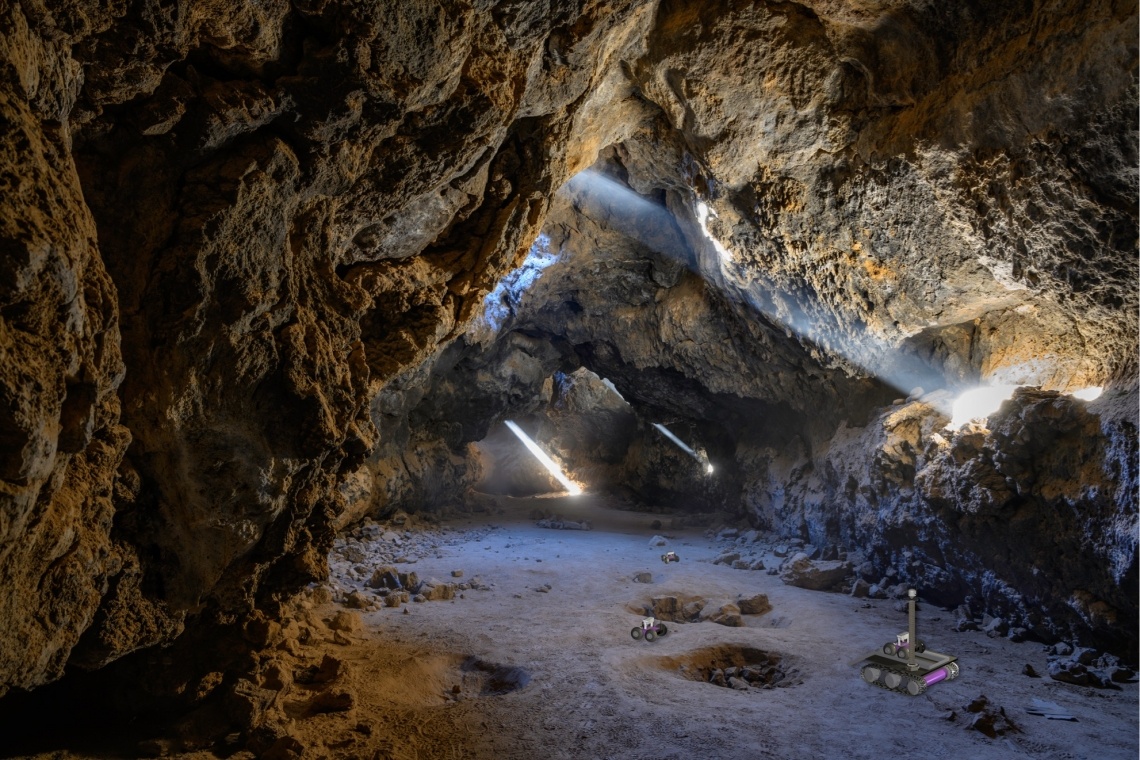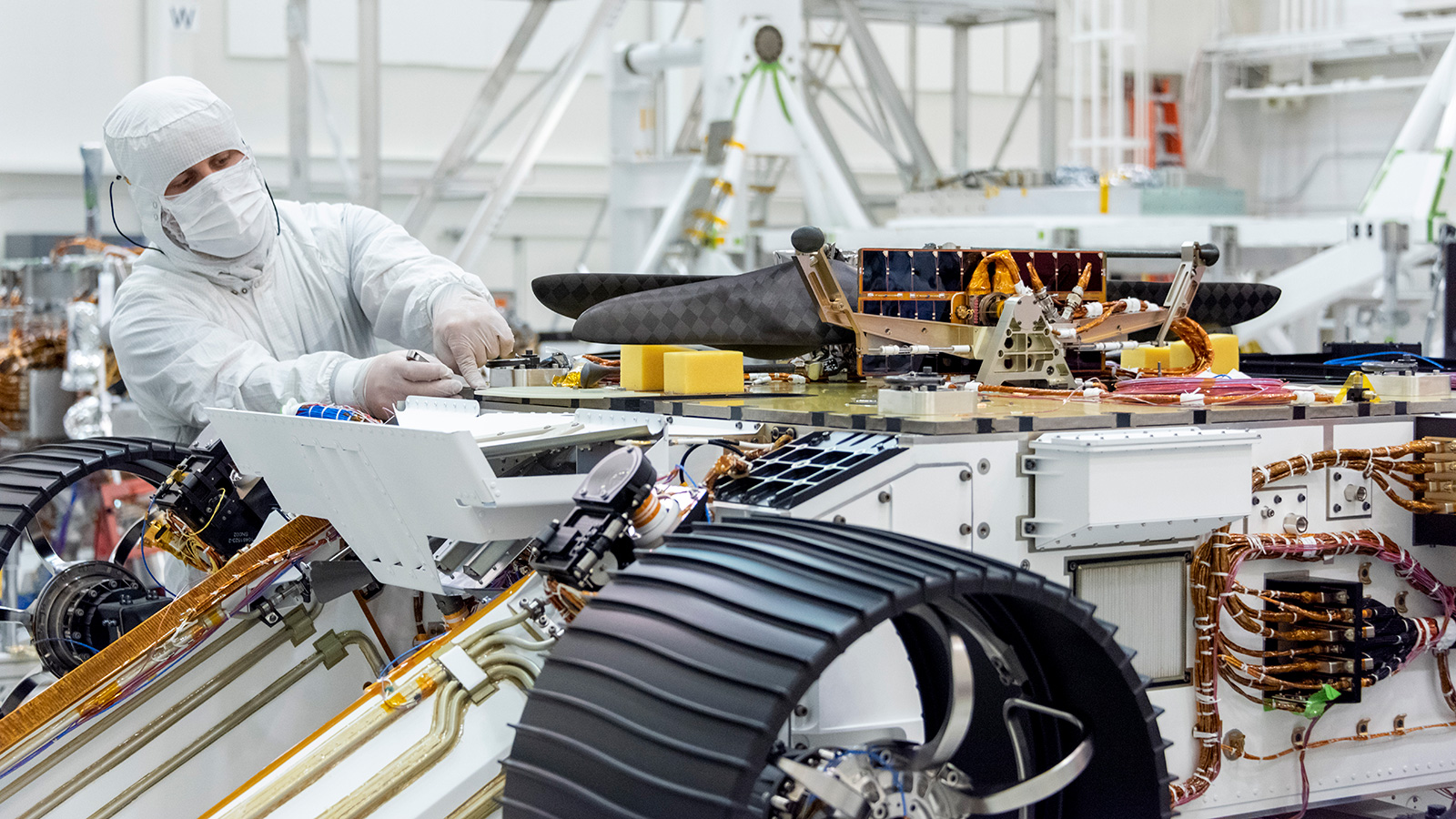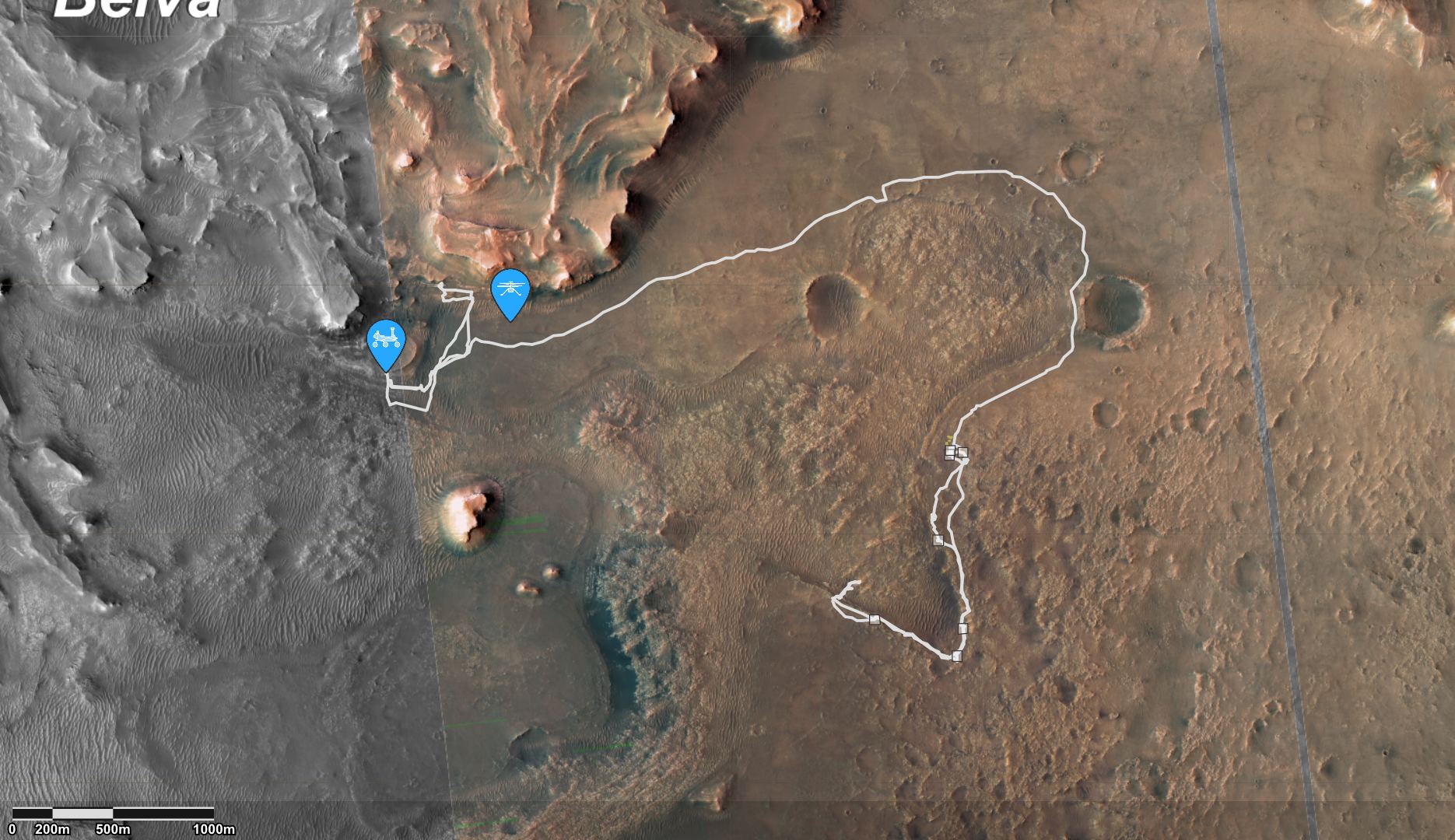Lunar exploration equipment at any future lunar base is in danger from debris blasted toward it by subsequent lunar landers. This danger isn’t just theoretical – Surveyor III was a lander during the Apollo era that was damaged by Apollo 12’s descent rocket and returned to Earth for closer examination. Plenty of ideas have been put forward to limit this risk, and we’ve reported on many of them, from constructing landing pads out of melted regolith to 3D printing a blast shield out of available materials. But a new paper from researchers in Switzerland suggests a much simpler idea – why not just build a blast wall by stacking a bunch of rocks together?
Continue reading “Lunar Infrastructure Could Be Protected By Autonomously Building A Rock Wall”Future Mars Helicopters Could Explore Lava Tubes

The exploration of Mars continues, with many nations sending robotic missions to search for evidence of past life and learn more about the evolution of the planet’s geology and climate. As of the penning of the article, there are ten missions exploring the Red Planet, a combination of orbiters, landers, rovers, and one helicopter (Ingenuity). Looking to the future, NASA and other space agencies are eyeing concepts that will allow them to explore farther into the Red Planet, including previously inaccessible places. In particular, there is considerable interest in exploring the stable lava tubes that run beneath the Martian surface.
These tubes may be a treasure trove of scientific discoveries, containing water ice, organic molecules, and maybe even life! Even crewed mission proposals recommend establishing habitats within these tubes, where astronauts would be sheltered from radiation, dust storms, and the extreme conditions on the surface. In a recent study from the University Politehnica Bucuresti (UPB), a team of engineers described how an autonomous Martian Inspection Drone (MID) inspired by the Inginuity helicopter could locate, enter, and study these lava tubes in detail.
Continue reading “Future Mars Helicopters Could Explore Lava Tubes”Exploring Lava Tubes on Other Worlds Will Need Rovers That Can Work Together

Planetary exploration, specifically within our own Solar System, has provided a lifetime of scientific knowledge about the many worlds beyond Earth. However, this exploration, thus far, has primarily been limited to orbiters and landers/rovers designed for surface exploration of the celestial bodies they visit. But what if we could explore subsurface environments just as easily as we’ve been able to explore the surface, and could some of these subsurface dwellings not only shelter future astronauts, but host life, as well?
Continue reading “Exploring Lava Tubes on Other Worlds Will Need Rovers That Can Work Together”When Should Robots Take Risks Exploring Other Worlds?
On May 1st, 2009, after five years on the Martian surface, the Spirit rover got stuck in a patch of soft sand (where it would remain for the rest of its mission). On February 13th, 2019, NASA officials declared that Spirit’s sister – the Opportunity rover – had concluded its mission after a planetary dust storm forced it into hibernation mode about seven months prior. And in March 2017, the Curiosity rover’s wheels showed signs of their first break, thanks to years of traveling over rough terrain. Such are the risks of sending rover missions to other planets in search of discoveries that can lead to scientific breakthroughs.
But what constitutes an acceptable risk for a robotic mission, and when are mission controllers justified in taking them? As it turns out, a pair of researchers from the Robotics Institute‘s School of Computer Science at Carnegie Mellon University (CMU) in Pittsburgh have developed a new approach for weighing the risks against the scientific value of sending planetary rovers into dangerous situations. The researchers are now working with NASA to implement their approach for future robotic missions to the Moon, Mars, and other potentially-hazardous environments in the Solar System.
Continue reading “When Should Robots Take Risks Exploring Other Worlds?”Mars 2020 Rover Gets its Helicopter Sidekick

Work on the Mars 2020 Rover is heating up as the July/August 2020 launch date approaches. Mission engineers just attached the Mars Helicopter to the belly of the rover, where it will make the journey to Mars. Both the solar-powered helicopter and the Mars Helicopter Delivery System are now attached to the rover.
NASA’s Mars Helicopter will be the first aircraft to fly on another planet. The small rotor-craft only weighs 1.8 kg (4 lbs.) and is made of lightweight materials like carbon fiber and aluminum. It’s largely a technology demonstration mission, and is important to NASA. The overall mission for the Mars 2020 rover won’t depend on the helicopter, but NASA hopes to learn a lot about how to proceed with aircraft on future missions by putting the Mars helicopter through its paces on Mars.
Continue reading “Mars 2020 Rover Gets its Helicopter Sidekick”

